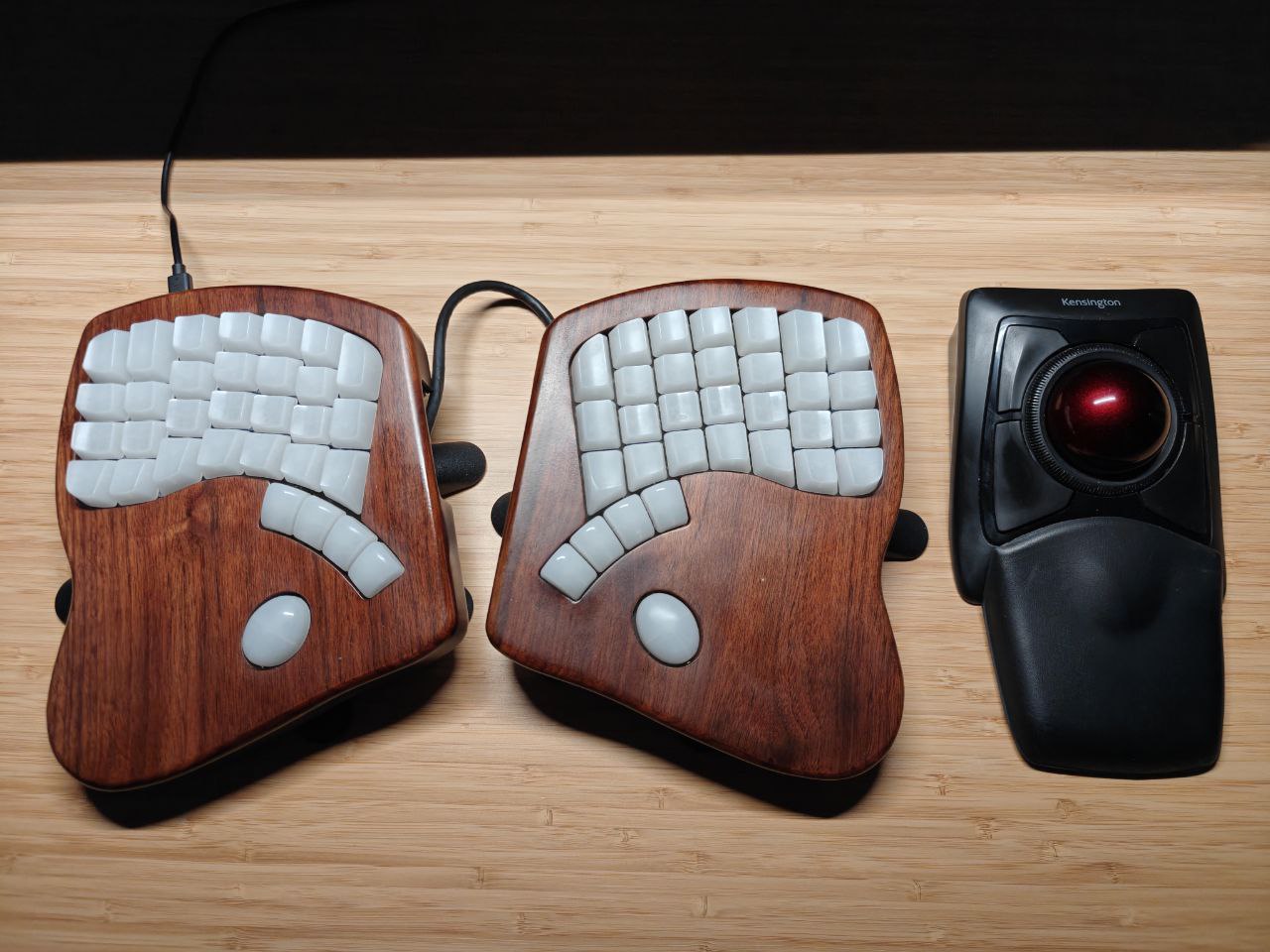I fell in love with trackballs since I got my first one several years ago. What I love about trackballs is that they take so little desk space. I use my desk for reading and writing notes, so any extra space is welcome. And, nothing compares to the aesthetics of a bare wooden desk. I highly encourage you to try a trackball mouse. It is a lot of fun!
My first trackball was a Logitech MX Ergo. I discovered that scrolling for a long period of time using the mouse wheel (e.g. while reading documents) made my right hand hurt badly. Unfortunately, I had to drop the Logitech trackball for the Logitech MX Master. I decided to go with the MX Master mouse because it has a feature called "MagSpeed scrolling". This feature automatically switches the mouse wheel from ratched mode to free-spin mode, which helped me a lot with the RSI.
Despite the Logitech MX Master being an excellent productivity mouse, I still missed using a trackball. Few months later, I discovered the Kensington Expert Wireless, a trackball that instead of a scrolling with a regular mouse wheel it used the ring surronding the movement ball.

To be honest, I did not like the mouse at the beginning. The main feature, the scrolling ring, wasn't great. It does not provided a smooth scrolling experience. Lucky for me, I discovered that on Linux you can also scroll by pressing a designated mouse button and moving the cursor on the direction of the scroll. Here is the script to achieve that
#!/usr/bin/env bash
mouse_name="Kensington Expert Wireless TB Mouse"
mouse_id=$(xinput | grep "$mouse_name" | sed 's/^.*id=\([0-9]*\)[ \t].*$/\1/')
xinput set-button-map $mouse_id 1 8 2 4 5 6 7 3 9
xinput set-prop $mouse_id "libinput Natural Scrolling Enabled" 1
xinput set-prop $mouse_id "libinput Accel Profile Enabled" 0, 1
xinput set-prop $mouse_id "libinput Scroll Method Enabled" 0, 0, 1
xinput set-prop $mouse_id "libinput Button Scrolling Button" 3
This small change, made me fall in love with the mouse.
The only remaining problem was that this script was only executed once right after logging in.
If I missed connecting the mouse, or switches the mouse to another computer, it reset to default.
At first, I re-executed the script manually every time this happened.
But it became a pain, and eventually decided to stop using the trackball and move back to the MX Master.
Until today, when I discovered that you can have X11 apply the libinput options
automatically to the device every time it connected.
The set up is very simple, create a file 40-libinput.conf with the following content
(you can obtain the name with libinput list-devices):
Section "InputClass"
Identifier "Kensington Expert Wireless TB Mouse"
MatchProduct "Kensington Expert Wireless TB Mouse"
MatchIsPointer "on"
Driver "libinput"
Option "ButtonMapping" "1 8 2 4 5 6 7 3 9"
Option "NaturalScrolling" "true"
Option "AccelProfile" "flat"
Option "ScrollMethod" "button"
Option "ScrollButton" "3"
EndSection
and drop it in /etc/X11/xorg.conf.d/. Restart the X session and that's it.
Now, the custom mappings will be applied every time the mouse is connected without
having to execute a manual script.
This is the end of my little journey with trackballs in Linux. If you liked this story, feel free to reach out to me via email and I promise to share more such experiences.
P.S. Anyone knows how to achieve the same on macOS? I tried Karabiner, but natural scrolling only applied to the scrolling wheel, not the scrolling button.